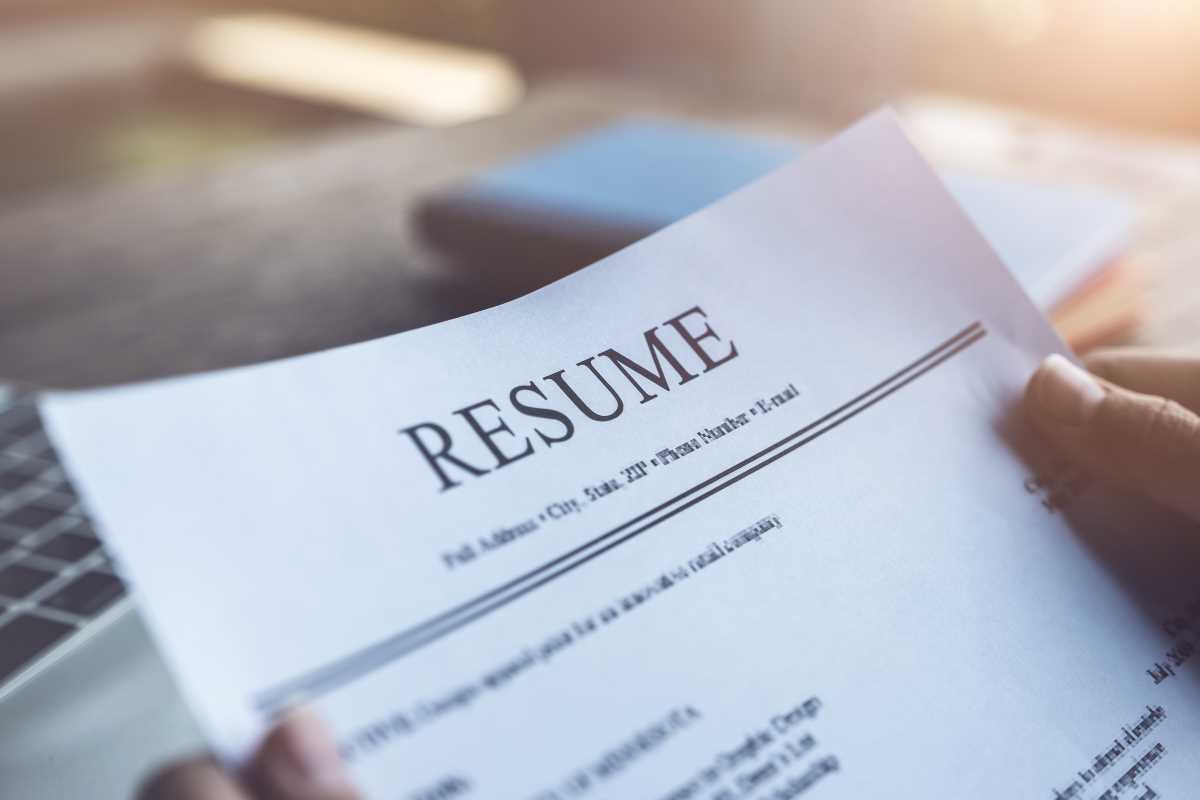Your resume is your golden ticket to job opportunities. It’s the first impression you make on potential employers, and in today’s competitive job market, you don’t want it to get lost in a stack of other applications. But writing a resume that truly stands out doesn’t have to be complicated. With the right approach, you can grab employers’ attention and earn that interview faster than you think.
A great resume is more than just a list of your jobs. It’s a story about what makes you valuable as a candidate. When done well, it highlights your skills, accomplishments, and potential. Wondering how to make that happen? This guide will walk you through every step of crafting a resume that helps you get hired fast, even if you’ve never done this before.
Keep It Simple and Clean
The first rule of resumes? Simplicity. You want your resume to be easy to read and understand at a glance. Employers usually spend just a few seconds scanning it before deciding whether to keep reading. A messy or overly complicated design won’t help your cause.
Stick to a clean layout with clear headings for each section, like “Experience,” “Education,” and “Skills.” Use a basic font like Arial or Times New Roman, and keep the size between 10 and 12 points. Avoid cluttering your resume with unnecessary graphics or colors. Simplicity shows professionalism and makes your qualifications the focus.
Start with a Strong Summary
Your resume should begin with a summary or objective statement. Think of this as your elevator pitch. It’s a short paragraph, usually 2-3 sentences, that introduces who you are and what you bring to the table.
For example, instead of saying, “Looking for a job as a marketing assistant,” try something like, “Creative and detail-oriented marketing graduate with hands-on experience in social media campaigns and content creation. Passionate about helping brands grow their online presence.” This way, you immediately show what makes you unique and valuable.
Highlight Accomplishments, Not Just Duties
One of the biggest mistakes you can make on your resume is simply listing your job responsibilities. Employers don’t just want to know what you were supposed to do; they want to know how well you did it.
Rather than saying, “Handled customer inquiries,” reframe it to something like, “Resolved over 50 customer inquiries daily, achieving a 95% satisfaction rating.” Whenever possible, include numbers and specific achievements. Did you increase sales, save time, or improve a process? Share those results.
Here’s another example. Instead of “Managed company social media accounts,” say, “Grew social media following by 30% in six months through engaging content and targeted campaigns.” See the difference? Employers love to see tangible proof of your impact.
Remember to Tailor Your Resume for Each Job
A generic resume might work in a pinch, but it won’t get you noticed as quickly as a customized one. Tailoring your resume to align with the specific job you’re applying for shows the hiring manager that you’ve done your homework.
Start by reading the job description carefully. What skills or qualifications are they emphasizing? If you see phrases like “team leadership” or “problem-solving” repeated, make sure those terms are reflected in your resume. This can also help your resume pass applicant tracking systems (ATS), which scan resumes for keywords before a human even looks at them.
Use Action Verbs
The way you describe your experiences matters. Start each bullet point in your work history with a strong action verb that grabs attention. Words like “managed,” “designed,” “led,” “created,” or “implemented” sound much more impressive than “worked” or “helped.”
For instance, “Managed a team of six to complete a $500,000 project on time and under budget” sounds powerful and professional. Action verbs convey confidence and help hiring managers picture you as a proactive problem-solver.
Include a Skills Section
Adding a skills section is a great way to make your resume easier to skim. Organize this list to include both hard skills (like Excel, Photoshop, or coding languages) and soft skills (like communication or time management). Keep it relevant to the job you’re applying for.
For example, if you’re applying for a data analyst position, you might list skills like “SQL, Tableau, advanced Excel, data visualization.” On the other hand, if it’s a customer service role, you might highlight “problem-solving, active listening, CRM software.”
Don’t overload this section, though. Focus on the key abilities that match the job.
Show Your Education and Relevant Training
The education section is pretty straightforward. Include your degree, the name of the school, and your graduation date (or expected date if you’re still studying).
If you’ve completed any certifications, workshops, or specialized training relevant to the role, list them here too. For example, if you’ve earned a Google Analytics certificate or completed a coding bootcamp, that can make a big impact.
If you’re early in your career and don’t have much work experience yet, put more emphasis on your education. Include relevant coursework, academic projects, or even extracurricular roles that taught you key skills.
Proofread, Then Proofread Again
Nothing will sink a resume faster than typos or grammatical errors. A single mistake can make you look careless, even if you’re otherwise a perfect fit for the job.
Read over your resume multiple times, and ask a friend, teacher, or mentor to review it too. Taking the extra time to polish it can make a huge difference. Remember, your resume represents you, so it should be as flawless as possible.
Keep Your Resume to One Page
For most job seekers, a one-page resume is the ideal length. Hiring managers don’t have time to dig through pages of information. That means you’ll need to be selective about what to include and focus only on the most relevant details.
If you’re struggling to keep it to one page, trim out older jobs or experiences that don’t relate to the role you’re applying for. Think about quality over quantity.
Add a Cover Letter
While not technically part of your resume, pairing it with a strong cover letter can improve your chances of getting hired fast. A cover letter lets you expand on the highlights in your resume and explain why you’re excited about the role. It’s also an opportunity to add a personal touch and show your personality.
For example, you can mention specific reasons why you admire the company or explain how your past experiences have prepared you for this particular job. Keep it concise and professional, but don’t be afraid to show your enthusiasm.
Take the First Step
Writing a great resume might feel like a tall order, but with the right approach, it’s absolutely something you can handle. Start by laying out your work history, education, and skills, then go through and refine it one piece at a time. Focus on presenting your achievements, customizing it for each job, and keeping it error-free.
Remember, your resume isn’t just a piece of paper. It’s your ticket to the opportunities you’ve been working toward. With the tips in this guide, you’re one step closer to landing a role that’s perfect for you. Keep it sharp, clear, and tailored, and you’ll be fielding interview requests in no time!
 (Image via
(Image via





